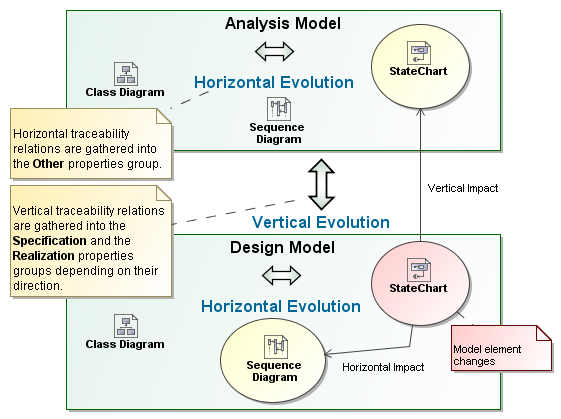Multiple relationships can be used for traceability representation, depending on the element type and method used.
The traceability relations can be represented by the following types of element dependencies:
- UML relationships (such as abstraction, realization, derivation)
- UML properties (such as Owned Behavior )
- UML tags (such as Alternative Flow of Events Diagrams )
The traceability relations can be single level and multilevel.
- When elements are related directly by using a custom UML relationship, property, or tag, the traceability relation is considered to be a single level relation.
- When elements are related indirectly by usually using multiple types of the above mentioned dependencies, the traceability relation is considered to be a multilevel relation.
The traceability relations can be specifying, realizing, or other. This depends on which direction a relation is analyzed and which element is considered as a basis.
- A relationship between a specific element and an element that is the realization of this specific element, from the point of view of the specific element, is considered to be realizing traceability (for forward traceability).
- A relationship between a specific element and an element that is the specification of this specific element, from the point of view of the specific element, is considered to be specifying traceability (for backward traceability).
All other traceability relations.

Horizontal and vertical traceability representation through the realizing, specifying, and other traceability relations
Related Pages